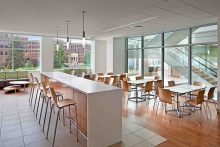Let There Be Light: Installing Lighting Fixtures
In a recent survey conducted by the Foundation of the Fabricators and Manufacturers Association, 60% of the 1,000 people surveyed stated that they avoided installing light fixtures.� Homeowners surveyed also avoided unclogging a drain and replacing a window pane, among other things.� To see�all of the�projects homeowners avoided, read Survey Says: Homeowners Avoid Simple Repairs.� Over the next few months, the At Home channel will provide how-to articles covering all projects on the list.� Our main goal is to show how easy the repairs actually are and that homeowners can do the work themselves.











